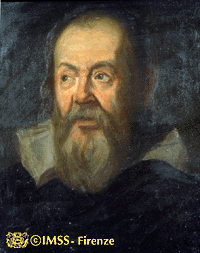 Galileo
and the Phases of Venus
Galileo
and the Phases of Venus
Several centuries
after the Mayan civilization dissipated, Venus played a major role in the
upheaval of the then current model of the Universe. Galileo Galilei
sat in his Florence home one November evening in 1610, observing Venus
as the Evening star through his telescope when he made a profound discovery.
He was so wary of his new knowledge he hid it from the scientific community
until he could have it confirmed by a trusted friend. Galileo had
discovered Venus has phases. He saw Venus as crescent shape, then
over the coming months it vanished, reappeared, and gradually formed a
full phase. He knew that these phases could only occur if Venus orbited
the Sun, rather than the Earth in the current model of the universe.
His findings gave evidence to the treatise Copernicus declared on his death
bed: That the Sun, not the earth, was the center of the universe.
Inquisitors in Rome pronounced this view heretical and forced Galileo to
denounce his findings (White 96). However the ripples in the water
had started and people began to reconfigure the model of the Universe.
With the discovery of the phases of Venus science adopted a more realistic
world view and we began to understand a truer order of the Universe.
The phases of
Venus that Galileo observed occur by the sun illuminating half of Venus.
As the earth and Venus orbit the Sun different portions of this illuminated
area can be seen from earth. Venus has phases exactly like the moon,
from crescent to full and back to a crescent phase. When Venus reaches
an Inferior conjunction, a point in space almost directly between the sun
and the earth, we can visibly see itís atmosphere. However, what
existed below the atmosphere remained a mystery.